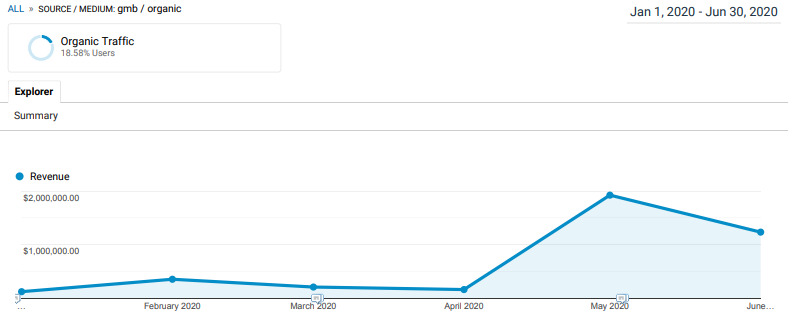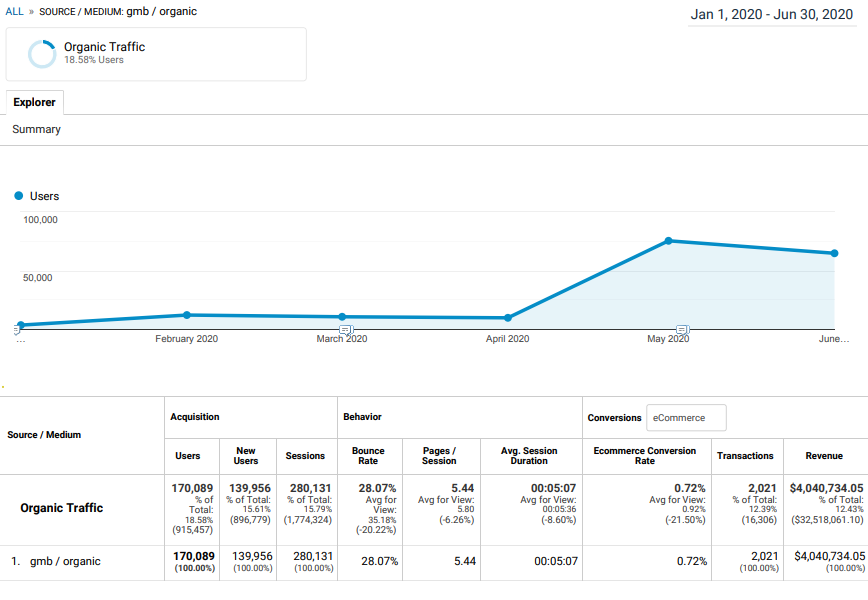Google My Business (GMB) clicks have an attribution problem. Often times these clicks are incorrectly attributed as direct traffic in Google Analytics. That means, when someone clicks the website, or product link, on your Google My Business listing, no matter how well optimized your listing is, if UTM parameters aren’t in place, that organic traffic — and even organic revenue — won’t be correctly attributed to SEO efforts. This is frustrating because Google already “steals” traffic from websites with their zero click-searches. Without proper tagging on GMB profiles, they can be taking credit for that traffic too.
I’ve been adding UTM tracking parameters to my clients’ GMB listings for some time, but I wanted to see how much of an impact it makes, especially for a large client with dozens of listings. Below are my findings for one client in particular.
About the Client
My client provides vacation rentals company along Alabama’s Gulf Coast. The have GMB listings for their 24 condos and beach houses that they rent to visitors to Gulf Shores and Orange Beach.
The Challenge
The client’s Google My Business clicks were being incorrectly attributed to direct traffic, causing organic traffic and organic revenue to not being correctly attributed to SEO efforts.
Strategy & Key Tactics
In order to ensure that GMB clicks were correctly attributed to organic search, I added UTM tracking parameters each of their listings on January 22, 2020. These parameters were added for the main website, the contact us page and a product listing (if products were available). When creating the parameters, I ensured I could differentiate each profile, which allowed me to tell which was the strongest performing location. Below is the string I used on each of their properties:
?utm_source=gmb&utm_medium=organic&utm_campaign=website-link&utm_term=condo-name-1
I worked with the Paid Search team to ensure I set these up properly and using similar naming conventions to them so we could easily report on our findings. The source was always gmb and the medium was always organic. The campaign would change depending on what link I added to the GMB listing (homepage, contact, products/property page). Since they have 24 different properties, I assigned those to the term and would change that name depending on which property the listing was for.
Results
Despite decreases in traffic and revenue due to the COVID-19 crisis and the closing of Alabama beaches, traffic, transactions and revenue share from GMB increases each month.

- In the 6 months since adding UTMs, over $4M in revenue was correctly attributed to organic search that would have otherwise been credited to direct traffic
- Transactions increased almost 230% from February, the first full month of reporting to June. While part of this can be attributed to seasonality, the share of traffic from GMB increased from 9.24% of total traffic in February to 23.36% of total traffic in June.


Summary
Having a well optimized GMB listing is not enough. By adding UTM tracking parameters, you can quickly and effectively gain organic traffic and revenue back from Google, and understand more how users are interacting with your profile.
